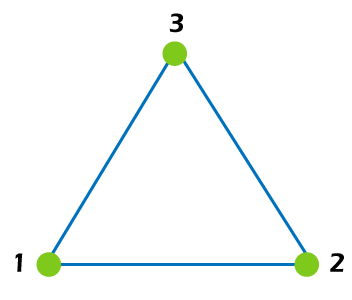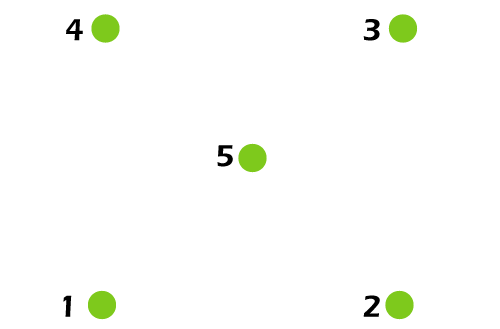Chromatic Polynomial in Discrete mathematicsGeorge Birkhoff was studying the four-colour problem in 1912. While doing this, he was introduced the chromatic polynomial concept. The chromatic polynomial can be described as a function that finds out the number of proper colouring of a graph with the help of colours. The main property of chromatic polynomial is that it will prove that four colours can be used to colour every map. They will be coloured in such a way that the same colour should not be shared by a region that shares a border with another region. There are also a lot of interesting properties of chromatic polynomial. In this section, we will learn some of these properties. Important DefinitionsTo understand this concept, we will learn about some definitions, which are described as follows:
We will explain these definitions with the help of following graph G: 
In the above graph G, the order n = 9, and size m = 8. The above graph G contains the 3 connected components, which can be indicated by the set of vertices {1, 2, 3}, {4, 5}, and {6, 7, 8, 9}. For the proper colouring of G, we will use one colour to colour the vertex set {1, 3, 4, 6, 7}, a second colour to colour vertex set {2, 5, 9}, and a third colour to colour vertex set {8}. In this process, we cannot use the same colour to colour the vertex which shares an edge with any other vertex. Chromatic PolynomialThe Chromatic polynomial of a graph can be described as a function that provides the number of proper colouring of a graph G with the help of x colours. We can determine the chromatic polynomial of any graph with the help of Deletion Contraction. Now we will explain this concept of a chromatic polynomial with the help of a simple example. For this, we will consider a graph, which is described as follows: 
Suppose there are a set of x colours that will be used to colour this graph. We can use the following way to systematically create proper colouring.
With the help of method in which this type of proper colouring is produced, we can easily find out the number of ways to colour this graph with the help of x colours or the chromatic polynomial like this:
P(G, x) = x(x - 1) (x - 2)
However, it is usually not a straightforward process to calculate the chromatic polynomial of a graph. Actually, it is very complicated to choose how to colour a graph in such a way that the number of colours can be minimized. Thus, we have required a better method that will be used to constantly obtain the chromatic polynomial of a graph. For this, the deletion contraction can be used. Calculating the Chromatic PolynomialFrom the above description, we have learned that the chromatic polynomial of any given graph can be determined by the Deletion contradiction. In this process, we are actually reducing the graph in each step. We will do this with fewer edges and with fewer vertices (in case of contraction). When we know the chromatic polynomial of any graph, we don't require to continue the Deletion contraction process on it. A series of empty graphs will be produced with the help of Deletion contraction if there is a case in which we are unable to get the information about the chromatic polynomial of any intermediate graph. With the help of Deletion contraction, we will be able to find the chromatic polynomial of a given graph if there is a case in which we have the information about chromatic polynomial of an empty graph. While learning the chromatic polynomial, we will also learn that an empty graph will not be connected to more than one vertex. So we can say that we can easily determine the chromatic polynomial of a disconnected graph on the basis of its connected components. |
 For Videos Join Our Youtube Channel: Join Now
For Videos Join Our Youtube Channel: Join Now
Feedback
- Send your Feedback to [email protected]
Help Others, Please Share










